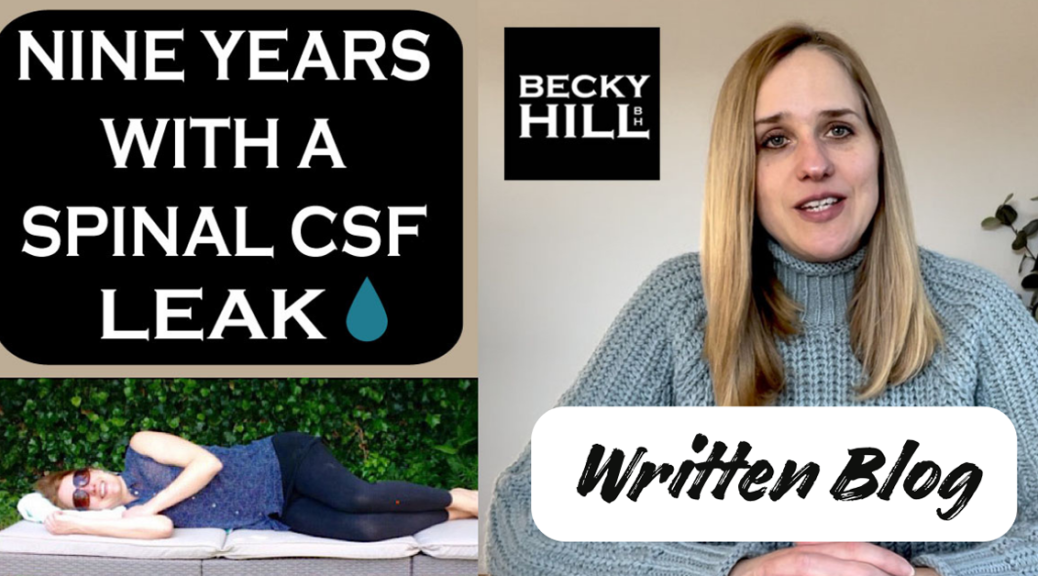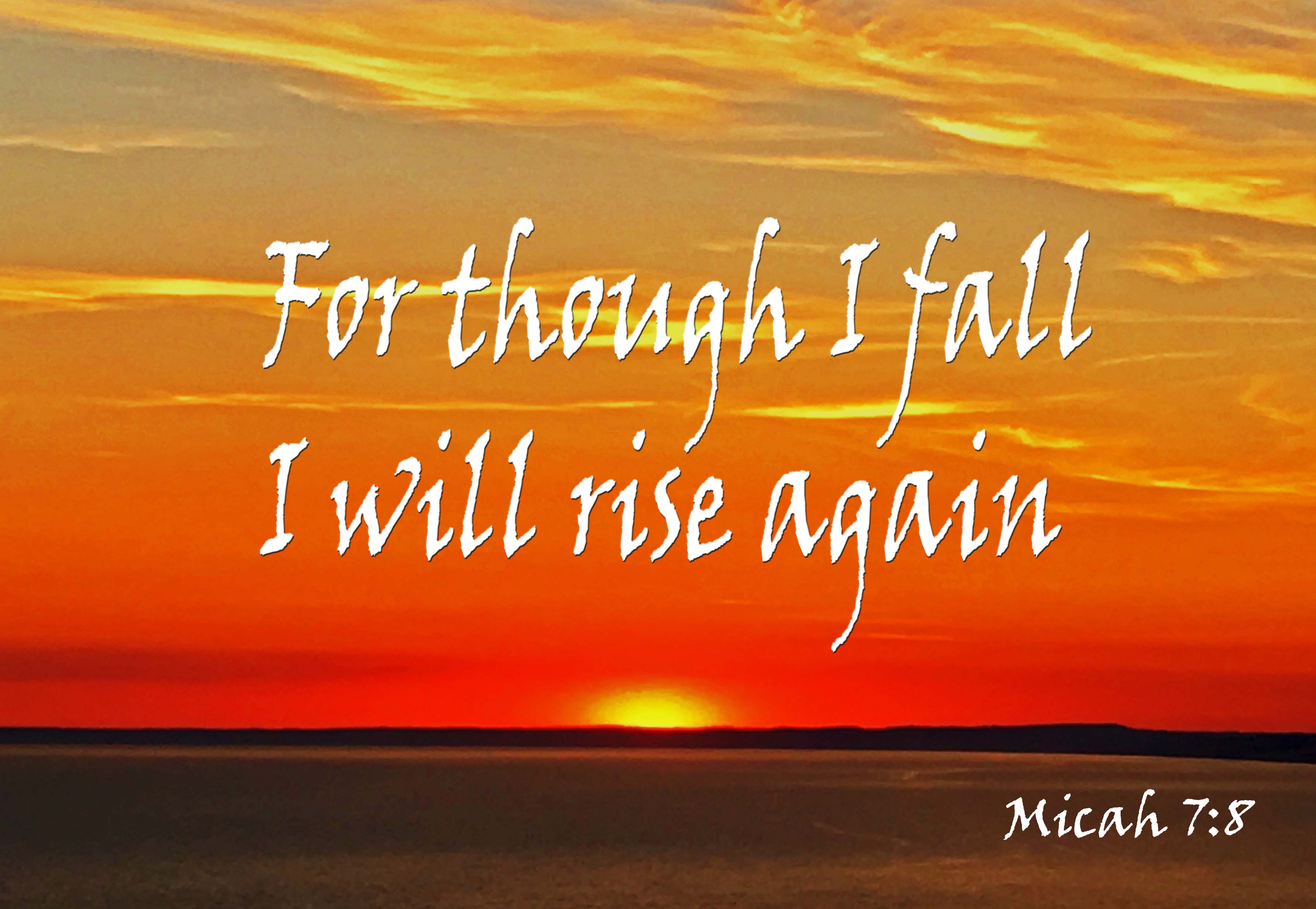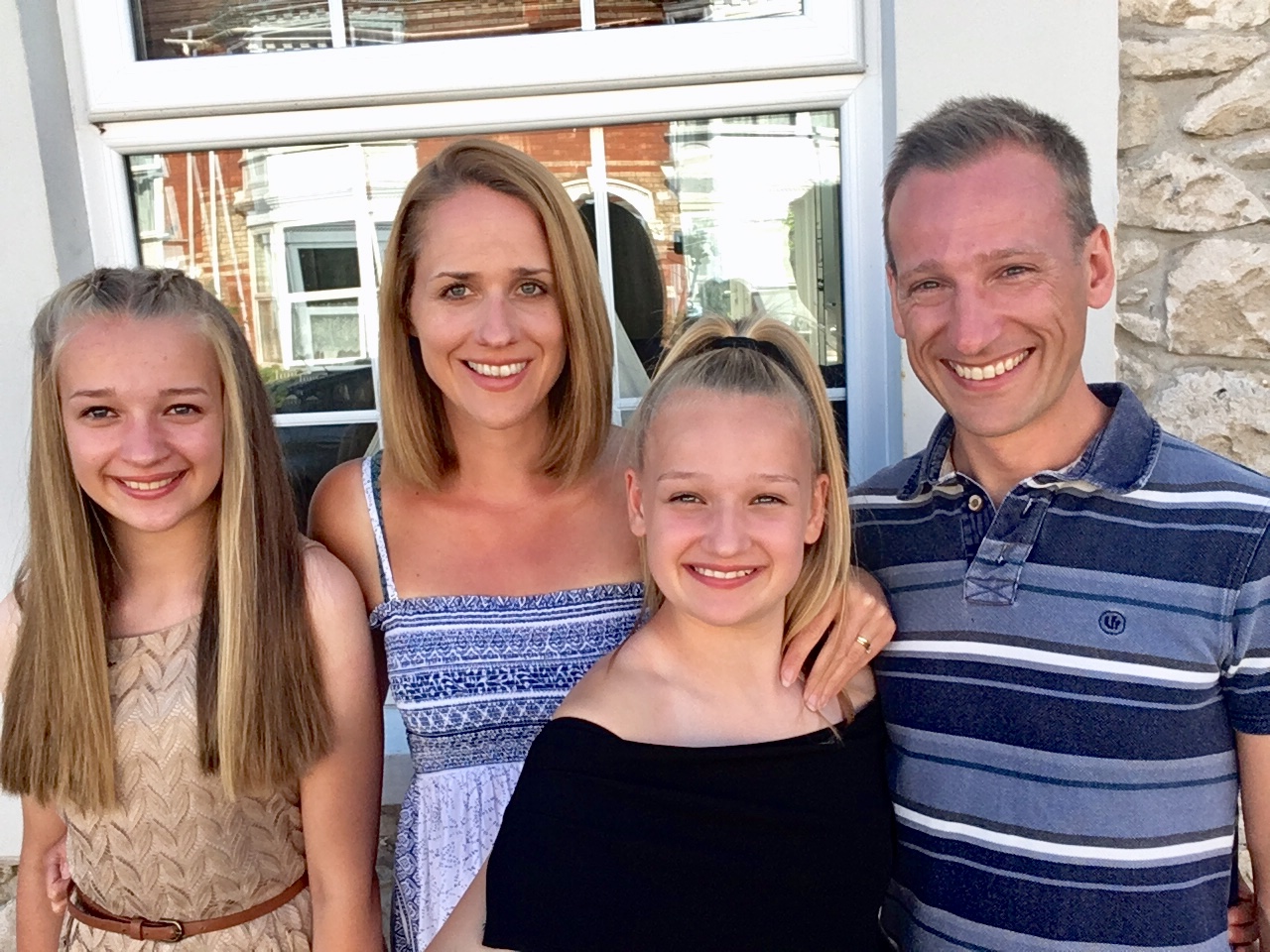“There is so much rejection, pain and woundedness among us, but once you choose to claim the joy hidden in the midst of all suffering, life becomes celebration. Joy never denies sadness, but transforms it to fertile soil for more joy.”
– Henri Nouwen
January marked nine years since my accident (a ladder fall) which means I have now spent over nine years living with a spinal CSF leak & arachnoiditis.
Nine years – that’s a long time.
Nine years of pain.
Nine years of endurance.
Nine years of medical support.
Nine years of a changed life.
Nine years of restrictions.
Nine years of daily struggle.
Nine years of trying to understand what actually happened to me that day & what has happened to my body since.
It’s not been easy. In fact it’s never easy. It’s always been hard.
And yet…
Nine years does become something of a new normal.
To the extent I have almost forgotten what it’s like to have a body where pain is absent, when you don’t have to spend all day every day managing distressing symptoms. When I had more choice about what to do and how to do it.
The current ‘normal’ has at least become more manageable. As I have learnt more about what is wrong, how to manage it, how to work with my body, accept it and make the most of the life I have. Now that I have treatments that help me to keep the worst debilitation at bay and to treat the radical relapses that can seemingly ‘take me back to the start’.
So as I reached my nine years anniversary I decided to connect again with others suffering. Whether at the start of your journey or many years in – I write for you to know that someone understands. Our lives and stories are always unique, and yet similar experiences do bring an affinity, That can help us to feel more seen and heard ourselves.
I also continue to write and make videos to educate others. Whether it’s those suffering, those caring for them, friends and family that are trying to understand or even the medical professionals that treat them. I know that true life stories can be powerful. To welcome someone into your world. To speak up for yourself and for others suffering like you.
Because if we are not heard then nothing will change.
And in the world of CSF leaks (& arachnoiditis) things still need to change – a lot. Much has already changed in nine years regarding spinal CSF leak research … and yet there is still so much further to go. The stories still regularly exist of people struggling to be listened to and diagnosed. Those simply not believed and shut out from the medical care they need. And those despairing because they can’t seem to get well however much treatment they may have because unfortunately the quicker you are diagnosed and treated the better the potential outcome of treatment.
So I firstly made a new video about a month ago. It’s quite a comprehensive update so it’s 30 mins long. This blog article is to compliment that and also enable people who do not speak English well to translate it more easily.
My videos and this blog post were also written in reflection and response to having had MRI’s from October 2023 reported by a neuroradiologist and my specialist consultant neurologist saying that they can still see my leak in the cervical and upper thoracic spine (extradural fluid) and it remains unchanged since my last CSF leak protocol MRI’s in September 2019. So that has confirmed that I am still leaking. This is why I wanted to focus this article and my video on my leak rather than my arachnoiditis symptoms. Although as I say in the video – it’s often so hard to really know which is which because of all the overlaps and also because my symptoms and scans point to both injuries being caused by the original ladder fall. So they developed together.
https://youtu.be/u5sVPPr1Rm4?si=lffBd05lc23dWMwM
Here is the content summary of the video which can be found below the video on YouTube and can be used to skip to different parts of interest.
VIDEO CONTENT SUMMARY
2:29 Arachnoiditis flares bring more classic postural CSF leak symptoms
2:48 I can be upright most of the day
3:06 Consistent and similar symptoms throughout the day
4:36 Arachnoiditis vs spinal CSF leak symptom confusion
5:40 Stopping invasive spinal procedures
11:11 Leak symptoms: Fuzzy/ dizzy/ dreamy equilibrium
11:38 Constant head pressure sensation
11:50 Neck stiffness
12:36 Phonophobia & Photophobia
13:06 Concentration and cognition limitations
13:42 Travel in cars and planes tough
14:50 Hyperreaction to ICP (intracranial pressure) changes
16:43 Can I still work?
19:16 There is still life and hope
20:40 I had 4-5 years of clear scans at start
21:40 Finding your own daily rhythm
23:53 Learning from others whilst understanding our uniqueness
25:50 ‘A marathon not a sprint.’
27:18 Be careful with getting fixated on getting fixed
28:02 There is a life to live even if you don’t get fixed
31:08 What about the future?
I am not going to write about all the content because I talk so much about it in my video. But I would like to reflect on a few important aspects of it.
SPINAL CSF LEAK SYMPTOMS
Firstly I talk quite a bit about some of my most prominent spinal CSF leak symptoms. The main problem I have in talking about them is that there is so much overlap with my arachnoiditis symptoms that it’s hard to always tell which is which.
Also these days many of my main symptoms are no longer so ‘classic’ in the sense that my headache is not postural anymore (unless I am in an arachnoiditis flare). And it’s also not ‘second half of the day’ in the sense that it gets worse the longer I am upright due to slowly loosing spinal fluid. I can actually be upright most of the day – although never without many symptoms. I do tend to lie down about 4-5pm but not because the headache has increased in intensity. But due to the fact I am utterly worn out by spending my whole day mainly on my feet. Managing my symptoms by keeping on moving about and walking around 10,000 steps a day. I cannot sit comfortably so lying down is my only chance to really rest. I do then lie down a lot of the evening to rest – but can get up to make and have dinner and do other things if I need to. I often do need to get up a bit or my lying down headache gets increasingly bad.
So really, my symptoms are pretty consistent throughout the day. I actually wake up with a headache, have headaches and feel pretty ill overnight if I am awake at all and have headaches lying down for any length of time – as I just said. So sometimes being upright improves my headache somewhat. As does walking and moving around.
For some reason staying in one position for any length of time makes all my symptoms worse – my head, neck & spine pressure increases, my thinking becomes cloudy and the pain quickly escalates to unbearable levels. Whether that’s standing, sitting or lying down. Although sitting is one of the worst positions for me that is perhaps more linked to the arachnoiditis. As is the typical need to keep on moving about to manage the pain, pressure and leg weakness that actually builds if I stay still. (Unless in a relapse – then walking causes my legs to get weaker).
My symptoms could also be somewhat affected by increased spinal fluid pressure (or volume) at times due to the arachnoiditis and subsequent CSF flow issues. And perhaps due to my body overcompensating in spinal fluid production due to the leak.
But it’s very very complex. And many doctors could only really theorise like I do. As a leak goes on long term (& during recovery) it can be very hard to differentiate higher or lower pressure (or volume) symptoms.
It is also possible that the leak helps somewhat regulate my pressure now. Like a natural shunt. Hence I could be at risk of a massive rebound high pressure issue if the leak was ever actually fixed.
STOPPING INVASIVE SPINAL PROCEDURES
Which brings me on to my next major point. The decision to stop further invasive spinal scans and procedures such as CT Myelogram (CTM), Digital Subtraction Myelogram, (DSM), epidural blood patches and surgeries. For me it’s just FAR too risky to the arachnoiditis.
I haven’t got the time to tell the story here – but I do on the video in the section where I talk about stopping invasive procedure’s. My last invasive spinal procedures were in September 2017. At that time I had a CTM And, we then followed up with a 40 ml blind epidural blood patch a week later. And I was subsequently in extreme pain which acute symptoms following both procedures. I had in fact been in a relapse prior to them. Which meant my undiagnosed arachnoiditis was in a massive flare up. Following the CTM I had a tonic clonic seizure in the recovery ward and was extremely ill and sick for the next 24 hours or so. All my normal symptoms were also made acutely worse. So we decided to try a lumbar EBP because we feared the lumbar puncture had perhaps given me a new leak & also in the hope it might have treated the old leak. That also caused me immense pain in my spine and head. I had to stay in hospital a number of days but struggled for months with severe head and spine pain we thought could perhaps be attributed to rebound high pressure. But in hindsight I think it was more complex than that because of the undiagnosed arachnoiditis.
So in summary – for me further invasive scans (that require LPs and contrast) are too risky. As are EBP and surgeries. Anything that goes anywhere near the leptomeninges feels too much risk of accelerating the arachnoiditis.
I do have friends with arachnoiditis who have had surgery on leaks and there were often complications which could often lead to the surgery failing or new leaks appearing perhaps due to the subsequent pressure surges. So it’s just not simple.
MONITORING FOR SUPERFICIAL SIDEROSIS
What could change that decision though is if I do develop Superficial Siderosis – which leak experts across the world are beginning to note as anything between 10-50% (and sometimes even more) likely from long term (especially ventral leaks which mine may well be). Especially those of 10-20 years. It’s an iron deposits (deposition of haemosiderin) build up in the brain or spinal canal from long term leaks or bleeds in the nervous system etc. And the only way to stop its progression would be to seal the leak.
But we shall cross that bridge if it comes and in the meantime I am having special MRIs to monitor for it.
HOPE FOR THOSE SUFFERING
Finally I wanted the video to provide some hope for those recently diagnosed or suffering with a spinal CSF leak long term. Because it’s often an awful thing to experience and the thought of living with something like this long-term just seems impossible. Which can often lead to utter despair and even suicidal thoughts.
So I wanted to say that you CAN live with this condition long-term. It is so very difficult. It’s so life changing and every day is spent managing symptoms and pain. Your life does have to change and that takes a long hard process of grief and letting go of who we once were. But I do believe we can learn to thrive despite it that doesn’t mean that we will feel like with thriving, but it can be a possibility and a part of our life again.
I actually made a video in the summer called ‘Learning to Thrive Despite Having a Chronic Illness’ which was all about the journey of learning how to discover a new way of life despite our injury, restrictions and challenges.
I never want to minimise how hard it is to accept our conditions and learn how to discover the best life we can despite them. I am also very grateful to be fortunate to currently have so much time out of bed, and still have the ability to walk so much which helps in what I am able to do. However, I haven’t always been able to do what I can now and have experienced many months and many years of spending a lot of my day if not all of my day in bed.
And in the end, we have no choice. We have to find a way to live like this because the only other option isn’t an option, especially when you have a family and children who need you.
I will keep on telling my story, and letting you know the twists and terms and the ups and downs of how it develops. The future is full of unknowns. It’s full of challenges which I have to both face the reality of, but also try not to think too much about.
“Worry does not empty tomorrow of it’s sorrow, it empties today of it’s strength.”
– Corrie ten Boom
So I will choose to keep on living life – for now WITH my spinal CSF leak and the arachnoiditis. And if I am to keep on living, I will try and find ways to keep on finding that:
Joy in living, despite the awful symptoms.
Contentment, despite the loss.
Peace, despite the constant noise of the pain.
And always pressing deeper into that Love, both spiritually & relationally that sustains us and gives us the strength and purpose to keep on going.
Even when some days are just really really hard.
“There is so much rejection, pain and woundedness among us, but once you choose to claim the joy hidden in the midst of all suffering, life becomes celebration. Joy never denies sadness, but transforms it to fertile soil for more joy.”
– Henri Nouwen
Here is my new summary video of my whole medical journey as well as footage of my January/ February 2021 adhesive arachnoiditis relapse/ flare and treatment with IV Steroids.
UK CSF LEAK CHARITY: https://www.csfleak.info/
US CSF LEAK CHARITY: https://spinalcsfleak.org/
SPINAL CSF LEAKS: Clinical Presentation, Investigation Findings, and Treatment Outcomes of Spontaneous Intracranial Hypotension Syndrome (NHNN authors): https://jamanetwork.com/journals/jamaneurology/fullarticle/2774171
Please see this May 2018 medical paper about the 10 most common myths and misperceptions about spinal CSF leaks. It is by some of the top world experts in treating this condition.
ARACHNOIDITIS: ‘Arachnoiditis – Taming the Most Painful Pain’ Dr Forest Tennant video https://youtu.be/VGuS1iTuhLo
ARACHNOIDITIS: Suspecting & Diagnosing Arachnoiditis (J. Antonio Aldrete) https://www.practicalpainmanagement.com/pain/spine/suspecting-diagnosing-arachnoiditis










